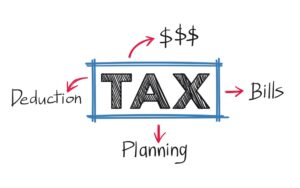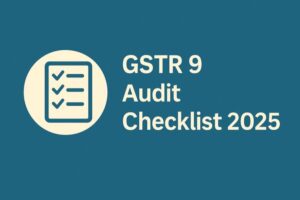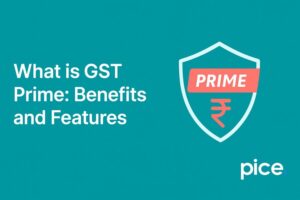Difference Between VAT and GST
- 31 Aug 24
- 9 mins
Difference Between VAT and GST
Key Takeaways
- Elimination of Cascading Effect: GST eliminates the cascading effect of taxes present in the VAT regime, leading to a reduction in overall tax burden on goods and services.
- Uniform Tax Rate: Unlike VAT, which had varying rates across states, GST ensures a uniform tax rate across India, simplifying the tax system.
- Broader Tax Base: GST applies to both goods and services, while VAT was limited to goods, with separate service tax for services.
- Simplified Compliance: GST has streamlined compliance with a simplified online registration and payment process, contrasting the more complex VAT compliance.
- Input Tax Credit: GST allows for input tax credit on both goods and services, whereas VAT did not permit input tax credit on customs duties paid.
The Goods and Services Tax and Value Added Tax, though both integral to India's taxation landscape, have substantial differences that set them apart. In this blog, we will walk you through a comprehensive guide on the differences between GST and VAT, helping you understand the benefits of the two.
What Is GST and Its Cascading Effect?

The Goods and Services Tax (GST) is a newly introduced taxation system that aims to ensure uniformity in the Indian taxation system. In other words, it aims to implement a ‘one nation, one tax’ system.
The GST regime has been introduced in India to eliminate the cascading effect of Value-Added Tax. In the previous tax regime, end consumers would have to pay on the already paid taxes, thereby increasing the price of products. As a result, the introduction of GST replaced multiple state-level taxes, including VAT, excise duty and so on, to ensure a uniform taxation system in India.
Benefits of GST Implementation
There are several benefits of GST implementation, some of which are discussed below:
- Eliminates the cascading effect of tax in India
- Simplified online procedure for GST registration
- Negligible compliance necessary
- E-commerce companies are treated separately
What Is VAT and Why Is It Being Merged Into GST?
The Value-Added Tax regime was introduced in India, 2005. It replaced 'Sales Tax' as one of the indirect taxes in India. The Government of India levied VAT at every supply chain stage making a cascading effect.
Goods like petrol, diesel and alcohol were taxable under VAT, unlike the GST model. This has been one of the drawbacks of VAT, followed by the cascading effect. The drawbacks of VAT resulted in its elimination and merger with GST.
Notably, the drawbacks of VAT are as follows:
- Cascading effect in the Indian indirect taxation system
- Claims for Input Tax Credits were restricted
- VAT rates varied between different Indian states
- Laws for VAT were different based on the state
Variants of VAT
Here are the 3 core variants of the Value-Added Tax that you need to know:
Gross Product Variant
A gross product variant or gross output VAT levies taxes on each stage of production of goods and services. It implies that businesses cannot claim ITC on the taxes paid on their purchases, leading to a higher tax burden on the business.
Income Variant
The income variant of VAT levies taxes on the income of businesses rather than on the consumption of goods and services. This approach further mandates a tax levy on the net income while allowing businesses to deduct expenses like taxes on inputs from the gross income prior to calculating the liability of VAT.
Consumption Variant
The consumption tax variant or credit invoice VAT is the most popular among the three variants. In the case of this variant, each stage of production and distribution observes a levy of VAT. Here businesses can claim credit for VAT paid on the purchases.
The VAT System in India

The VAT system in India works in a significant manner. Here is how it works:
- Manufacturers: Manufacturers are liable to pay VAT on their raw materials and inputs. Further, they transfer the tax burden by adding VAT to the cost of goods sold.
- Wholesaler/Distributors: Wholesalers or distributors purchase goods from manufacturers paying VAT. Further, they add VAT to the cost and prepare the selling price.
- Retailers: Retailers buy goods from wholesalers or distributors paying VAT. Further, they add it to the selling price and the end consumers pay the final VAT for their purchases.
As VAT is adjusted at every stage of purchase from manufacturers to retailers and end consumers, it reduces the cascading effect of the previous sales tax rules. The end consumer bears the final burden of VAT in the Indian VAT system.
VAT Guiding Authority
Under the Ministry of Finance, there is an Empowered Committee in each Indian state that has the guiding authority for VAT. This ensures a uniform taxation structure in the country under the VAT regime.
Who Pays VAT?
VAT is a category of indirect tax. As a result, the end consumer is liable to pay VAT. However, due to this factor, the tax burden can be reduced and transferred to the end consumers by the suppliers.
Importance of VAT
The importance of VAT includes the ability to eliminate the double taxation system followed by the cascading effect of sales tax. Further, it ensures a uniform rate and facilitates better compliance with the Indian taxation system to create opportunities for global trade.
Comparison between VAT and GST
Here are the key differences between GST and VAT:
| Parameter | GST | VAT |
| Where is it taxed? | On both goods and services | On goods only (service tax imposition for services) |
| When does it apply? | On goods and service supply | On sale of goods |
| Tax rate and laws | The tax rate remains the same across India. | The tax rate varies based on the Indian state. |
| Authority over taxes | The Central government and State governments share the tax collected in equal proportion. | The State government has the authority or rights to VAT collected. |
| When is the return filed? | GST returns should be filed within the 20th of the following month for the previous month. | VAT returns should be filed on the 10th, 15th or 20th of the following month for the earlier month. |
| Payment mode | Online payment of GST is mandatory when the GST amount exceeds 竄ケ10,000. For the GST amount below the mentioned threshold limit, both online and offline payment options are there. | No online payment option is available for VAT. |
| Input Tax Credit | Taxpayers can claim input tax credits on the supplies of goods and services they receive. | Taxpayers cannot claim input tax credits on customs duty paid. |
| Tax Compliance | GST compliance norms remain the same across all Indian states. | Compliance norms vary based on the Indian state of goods movement. |
| Collection of Revenue or Tax | State of human consumption since it is a destination-based tax | State of goods sold |
How Value Added Tax and Goods and Services Tax Are Calculated?
There are distinct differences between GST and VAT calculation. Here is a brief overview on the calculation of the two taxation systems.

(i) Under the VAT system
For instance, a consultant charges a 15% professional tax for a service costing ₹1 lakh. The output tax liability will be ₹1,00,000 * 15% = ₹15,000.
Now, if office supplies are bought cost ₹20,000 at a VAT rate of 5%, the VAT amount is ₹20,000 * 5% = ₹1,000. Thus, the total amount of tax to be paid under the VAT system will be ₹15,000 + ₹1,000 = ₹16,000.
(ii) Under GST Regime
For instance, a consultant charges 18% professional tax on services costing ₹1 lakh. The output taxable liability will be ₹1,00,000 * 18% = ₹18,000.
Now, if office supplies are purchased worth ₹20,000 at a 5% GST rate, the GST amount will be ₹20,000 * 5% = ₹1,000. In the case of GST, the amount gets deducted instead of being added, unlike VAT. As a result, the tax to be paid is ₹18,000 - ₹1,000 = ₹17,000.
Conclusion
Knowing the differences between GST and VAT can help you understand the Indian taxation system thoroughly. Further, you can comply with the tax norms with improved knowledge and awareness about GST and VAT. GST ensures a uniform tax rate in the Indian economy while reducing the cascading effects that VAT imposes on the taxation system in the country.
💡 If you want to pay your GST with Credit Card, then download Pice Business Payment App. Pice is the one stop app for all paying all your business expenses.
 By
By 

















